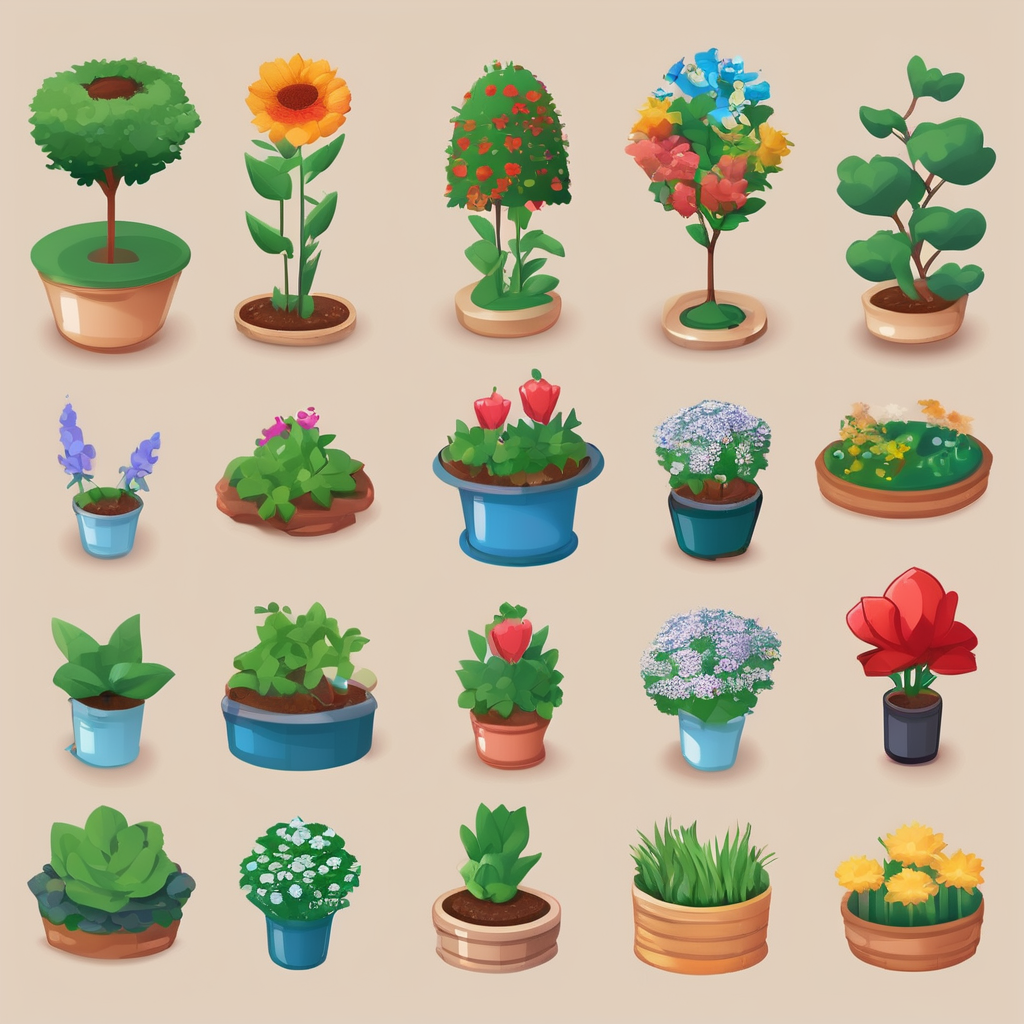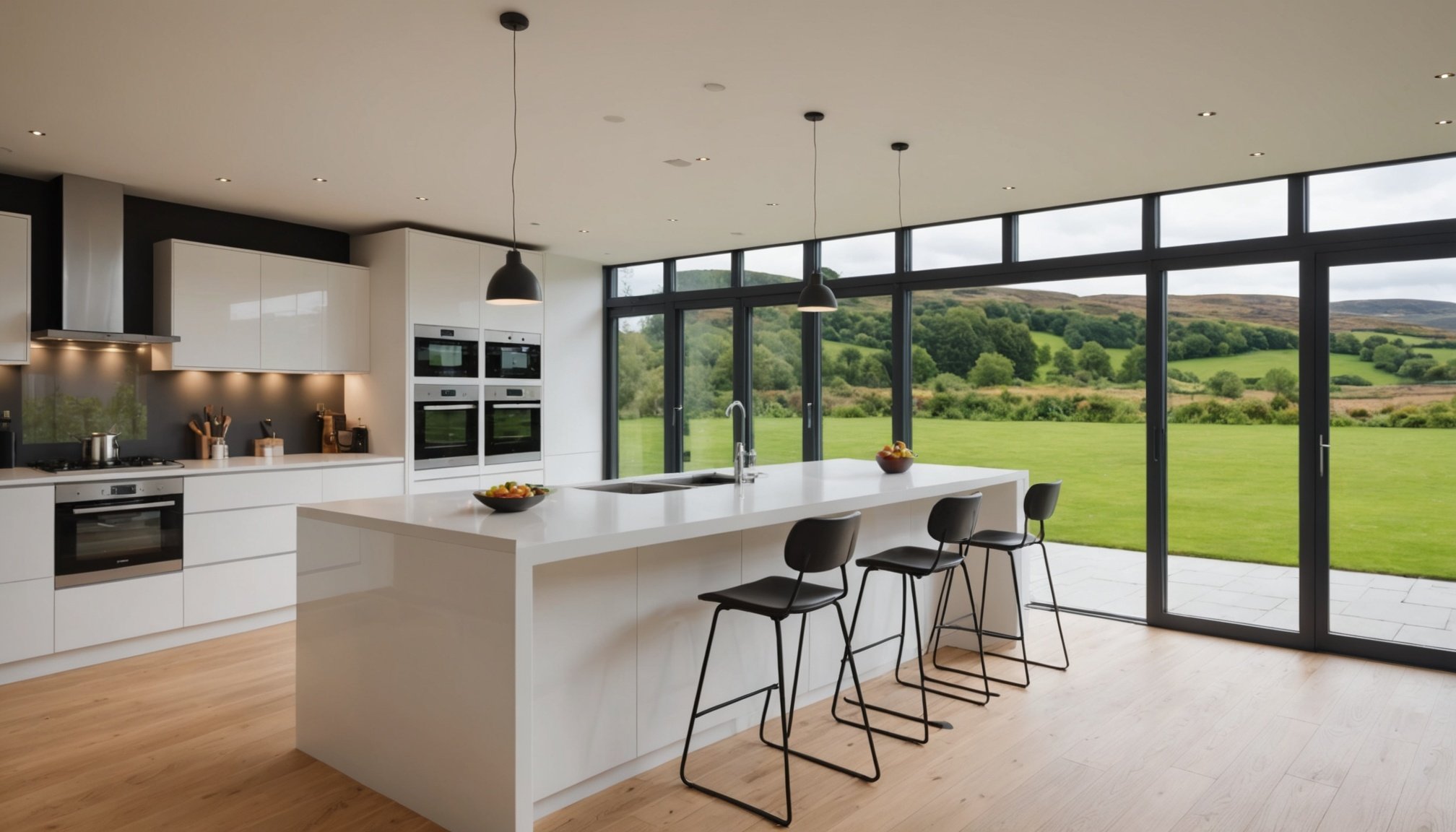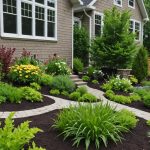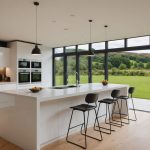When it comes to maximizing natural light in a home, most people will immediately tell you to get a south-facing property. But what if your house faces north? This doesn’t mean you are destined to live in perpetual darkness. There are numerous ways to enhance natural light in a north-facing property. Scotland, known for its famous landscapes and often-overcast skies, is no exception. If you own a house in Scotland facing north, this article is tailored especially for you, filled with design ideas, garden layouts, and room arrangements that will unlock your house’s full potential.
Understanding North-Facing Properties
North-facing properties are often misunderstood. Yes, they do get less direct sunlight, but that doesn’t mean they are always dark and gloomy. To get the most out of your north-facing house, you first need to understand its peculiarities.
A découvrir également : What is the best strategy for bidding in a property auction in Liverpool?
North-facing rooms are often cooler and receive less direct sun than their south-facing counterparts. They get their light indirectly, mostly during the early morning and late afternoon. The quality of this light is soft and diffused, free from the harsh, intense midday sun. For artists, this consistent illumination is often preferred for studios, as the subtle light allows for better colour accuracy.
The cooler temperatures of north-facing rooms also make them ideal for certain types of plants. Ferns, ivy, and other shade-loving plants thrive in these conditions, creating lush, verdant spaces that can be incredibly soothing.
A voir aussi : Boosting Home Security in Birmingham”s Suburbs: Innovative Ways to Leverage Technology
Design Ideas for Maximizing Natural Light
So, how do you make the most of this subtle, diffused light? The answer lies in careful design and a thoughtful choice of colours.
Light, neutral colours can help to bounce light around a room. Opt for off-whites, light greys, and pastel shades. Avoid dark, heavy colours that can make a room seem smaller and darker. Mirrors are another great design tool. Strategically placed, they can reflect light around the room, creating the illusion of more space.
When it comes to window treatments, less is more. Heavy drapes will only block light. Instead, opt for light, airy fabrics that let as much light in as possible. If privacy is a concern, consider sheer curtains, which allow light in while still providing some degree of seclusion.
Planning the Garden to Complement the House
The outside space of your north-facing house can also play a crucial role in maximizing natural light. Here’s where gardens come into play.
In a north-facing garden, the sun will be on the front of the house. This means that the back garden will be in shade for much of the day. But, with careful planning, you can still create a beautiful outdoor space.
Plant shade-loving plants in the areas that get the least sun. There are plenty of attractive options to choose from, including hostas, ferns, and rhododendrons. Meanwhile, reserve sun-loving plants for the front garden.
Consider incorporating reflective surfaces into your garden design. Water features, mirrors, and light-coloured paving can all help to bounce light around your garden, especially into shady corners.
Transforming the Interiors to Enhance Light
Back inside, pay attention to the layout of your rooms. Open-plan living can be a great way to maximize light, especially if your living space is on the ground floor. Knocking through walls to create a more flowing space can make a huge difference to the amount of light that filters through your home.
Furniture placement is another crucial factor. Avoid blocking light sources with large pieces of furniture. Instead, arrange your furniture in a way that allows light to flow freely around the room. Glass or reflective surfaces can also help to bounce light around the room.
Making the Most of the “Golden Hours”
Lastly, do not overlook the potential of the "golden hours" – early morning and late afternoon. These times of day offer a soft, warm light that can be especially beautiful in a north-facing room.
During the day, try to make the most of natural light. Avoid turning on artificial lights until it’s necessary. Opt for task lighting rather than overhead lights – it’s warmer and less harsh.
In conclusion, a north-facing home in Scotland doesn’t have to be dark or gloomy. With a little thought and effort, you can open your house and garden up to the light, creating spaces that are warm, inviting and full of character. Embrace the unique quality of light that a north-facing home offers, and you will discover that it has its own particular charm.
Exploring Paint Colours and Interior Design Techniques
In the realm of interior design, colour palettes play a crucial role in manipulating the perception of light within a space. For north-facing rooms, the key is selecting the right paint colours that maximise the amount of natural light.
A north-facing room can be quite cool in tone, therefore warm and light paint colours can help to balance this out. Opt for tones that lean towards the yellow, cream or even soft peach spectrums. These hues are accomplished at brightening up a space, making it seem warmer and more inviting. A gentle blue-green can also work well, creating an illusion of light bouncing around the room due to its reflective qualities.
As a rule of thumb, avoid dark colours, particularly on large surfaces like walls. Dark colours absorb light, making a room feel smaller and less illuminated.
In addition, consider your furniture’s material and finish. Polished, glossy furniture can act as reflective surfaces, helping to bounce light around the room. Similarly, glass furniture or accessories can play a significant part in enhancing the light quality in your north-facing room, leading to a brighter, airier space.
Year-Round Garden Ideas for North-Facing Gardens
Scotland’s four-season climate offers a unique challenge for north-facing gardens. However, there are several garden ideas to ensure your outdoor space stays vibrant year-round.
In winter months, when the sunlight is scarce, incorporate evergreen plants that maintain their colour throughout the year. Plants like ferns and hostas are shade-loving and can survive with minimal light. For a splash of colour, bluebells and rhododendrons are great options. They thrive in cool, shaded areas and bloom beautiful flowers that brighten up the garden.
Another strategy to keep your garden vibrant is to use light-coloured garden furniture and ornaments. These will reflect any available sunlight and provide a visual lift to the garden. A water feature is a charming addition and its surface can also act as a mirror, reflecting sunlight into the garden.
Plants with variegated leaves, such as the spider plant or ivy, can provide interesting textures and colours. They are not only shade-tolerant but also their light-coloured leaves can add brightness to your north-facing garden.
In Conclusion
The unique characteristics of a north-facing property in Scotland can be used to its advantage with the right strategies and design ideas. Whether it’s selecting the right paint colours, arranging the interior design, or planning a year-round vibrant garden, each step can contribute to maximising natural light in your home.
Remember, every room and garden will respond differently to natural light throughout the day and across the seasons. It’s about appreciating and working with these variations instead of fighting against them.
Ultimately, a north-facing home should not be viewed as a disadvantage. Instead, embrace its idiosyncrasies and use them to create a charming, tranquil living environment that glows with its own unique brand of beauty.












